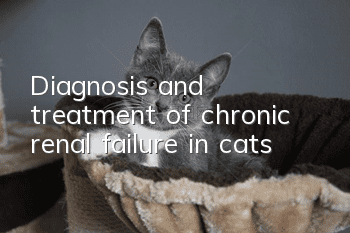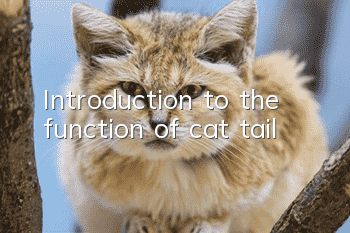Is polycystic kidney disease in cats a genetic disease? How should polycystic kidney disease in cats be treated?

Polycystic kidney disease is a hereditary disease. Fluid-filled "small blisters" have already formed in the two kidneys of cats when they are born. They are so subtle that it is impossible to detect and prevent the progression of this disease in advance with current medical technology. As cats age, the small blisters continue to grow larger and more numerous, and then the kidney function declines and even develops into chronic renal failure. Usually, cats carrying the polycystic kidney disease gene are bound to develop the disease, with the average age being 7 years old and the earliest being 3 years old (deficiency of kidney function will definitely occur before the age of 10). About 6% of cats in the world are affected by polycystic kidney disease.
Cats carrying the polycystic kidney disease gene are mostly caused by either parent having polycystic kidney disease and mating with healthy cats after the gene mutation; it is worth noting that not every brother and sister in a litter will have the disease (but 75% will get it).
Note: If both parents have polycystic kidney disease, severe lesions will appear in the uterus, causing the pregnant cat to miscarry or stillbirth, making it almost impossible for the pregnant cat to grow up healthily. (It can survive up to three months, but this phenomenon is very rare)
Symptoms/Signs:
Since the outbreak of polycystic kidney disease takes a long time to accumulate, there are not many or large "small blisters" in the early stage, and they will not significantly affect kidney function. Therefore, it is almost impossible to detect any abnormality in the early stage, but as the disease progresses, thirst may occur. , hematuria, and kidney enlargement, obvious symptoms will not appear until the kidneys cannot meet the body's needs, but at this time, the disease has already reached renal failure.
· Vomiting, diarrhea (even blood)
· Abnormal urinary habits, such as excessive urination (polyuria)
· Increased thirst
· Decreased appetite/refuse to eat
· Depressed spirit
· Dry hair and severe hair loss
· Blindness
· Uncoordinated limbs
· High blood pressure
· Epilepsy
· Anemia
In addition to the above symptoms, complications such as high blood pressure, common heart murmurs, lower urinary tract diseases, and kidney infections may also occur. Moreover, because polycystic kidney disease affects the kidney's urine collection system, urine is easily retained, and there is a chance of kidney infection. It will also be higher. In addition to the symptoms of chronic renal failure in the late stage, severe pain can also occur due to rupture (or infection) of the cysts in the kidneys.
Note: Data show that at least 6% (up to 68%) of cats with polycystic kidney disease will also develop "small blisters" in the liver, pancreas and uterus.
What is the basis for the doctor’s judgment?
Generally divided into two situations, before the onset of polycystic kidney disease and after the onset of polycystic kidney disease. If the above obvious symptoms appear, it is already in the late stage of the disease. At this time, the doctor will use blood and urine to check whether the cat’s kidney function is normal; in the early stage, cats can usually only be screened through B-ultrasound (ultrasound) and genetic testing. Whether you carry the polykidney capsule gene.
· B-ultrasound
It is the fastest and simplest way to diagnose polycystic kidney disease, but B-ultrasound can only be used after the cat is 6 weeks old. However, at this time, the requirements for doctors are relatively high, and experienced doctors are needed to take pictures. It is recommended that the best time is to check the cat when it is about 10 months old. At this time, the accuracy rate is as high as 98%.
Note: The "blebs" in the kidneys of cats at birth are too small (perhaps not even 1 mm). B-ultrasound cannot diagnose it until it exceeds 2 mm.
· Genetic testing
You only need oral sampling to determine whether you carry the polycystic kidney gene, but this only applies to cats with polycystic kidney gene mutations, such as Persian cats and related breeds. Therefore, doctors often ask about the cat’s breed, age and other factors before genetic testing. Genetic history.
Note:For example, polycystic kidney disease in Maine Coon cats has little to do with genetic mutations, so genetic testing alone is useless.
How to treat:
The onset of polycystic kidney disease requires a period of development or even several years before it reaches the point where it affects the health of the body. Therefore, unless the cat is old or has abnormal indicators, it will not affect the cat's health for the time being. There is currently no way to slow down the progression of polycystic kidney disease, let alone treat it completely. At present, the main research direction of the animal medicine community is how to reduce the impact of polycystic kidney disease gene on cat breeding, and little attention is paid to the treatment itself. By the time it can be treated, most of them have developed chronic renal failure, and then the treatment is targeted according to the treatment method.
Dietary calorie restriction
Experiments on polycystic kidney disease in mice have found that reducing caloric intake by about 10% can slow down the progression of polycystic kidney disease, but no research has shown that this can also be done in cats. (From "A mild reduction of food intak"e slows disease progression in an orthologous mouse model of polycystic kidney disease》Kevin R. Kipp et al. ), but it only reduces the calories by 10%, and does not have any side effects or instability factors like the same medicine. It is recommended that parents of cats with polycystic kidneys at home give it a try.
· How to calculate a cat’s basic daily calories
30*weight(kg)+70
· Adult neutered cats with polycystic kidney disease
(Basic calories*1-1.2)*0.9
· Cats less than 4 months old with polycystic kidney disease
(Basic calories*3.0)*0.9
· Cats with polycystic kidney disease that are older than 4 months and under 1 year old
(Basic calories*2)*0.9
Note: Be sure to calculate strictly in accordance with the cat’s own caloric standards!! Don’t forget to multiply and divide first and then add and subtract. (dog head)
If it is determined that the cat in your home does suffer from polycystic kidney disease, it is recommended to check regularly (preferably twice a year or once every 4-6 months) for kidney indicators, B-ultrasound, urine test, blood routine, blood pressure, etc. If no abnormalities are found, feed according to the usual feeding method (or caloric restriction mentioned above), and no prescription food or other drugs (including kidney supplements) are needed.
Note: Lower urinary tract infection and nephritis are both high-risk cases of polycystic kidney disease; in addition, it is best to call in advance for blood pressure examination, as most hospitals cannot do the examination.
Tips on cat health:
Any cat with Persian cat blood or allowed to be bred with Persian cats has the potential polycystic kidney gene. Therefore, if you have friends who raise the following cats at home, it is necessary to undergo genetic and ultrasound testing to check the possibility.
·High risk
Persian cat, Scottish Fold, British Shorthair, Cornish Rex, Chinchilla, Himalayan cat, Garfield cat, Tiffany cat
·Medium risk
Ragdoll cats (the prevalence rate of purebred Ragdoll cats is less than 3%, but they are often mated with Persian cats in China, so the data is not applicable), Maine Coon cats,Norwegian Forest Cat, Siamese Cat, Birman Cat, Bombay Cat, Pomera Cat, Devon Rex Cat, Cornish Rex Cat
·Low risk
Abyssinian cat, Balinese cat, Bengal cat, Burmese cat, Egyptian cat, Russian blue cat, Singapore cat, Somali cat
- How many times a year does a Ragdoll cat go into estrus?
- How can I cut my cat's nails without resisting?
- How to enhance your cat’s immunity? Ways to boost your cat’s immunity!
- How to choose cat food for cats The best choice for cat food
- As a cat owner, you must know how to take your cat to the hospital for emergency treatment!
- Why should cats eat cat grass? The difference between cat grass and catnip
- Do kittens need to bask in the sun?
- What should I pay attention to when feeding kittens?
- How to use external anthelmintics for cats?
- What skills do kittens need to learn as they grow? Cat skill training!



